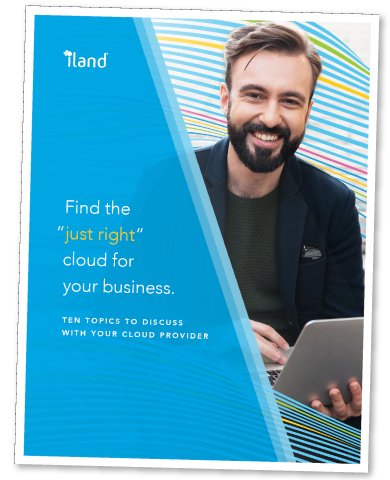Episode Summary
iland Cloud Technologist Brian Knudtson is joined by guests Jeramiah Dooley, Ron Singler, and Enrico Signoretti for a conversation about the advantages of using a globally distributed cloud. They discuss difficulty in achieving a global strategy, geo-diversity in data centers, and data locality.
Panel
Cloud Conversations
Topic 1
[05:07] How are cloud providers helping customers with global footprints?
Topic 2
[18:18] Geo-diversity in data centers is obviously needed for disaster scenarios, but why do customers look for it for day-to-day operations?
Topic 3
[23:41] Where data centers are located can be critical for recovery, sovereignty, supportability, and latency. How should customers investigate cloud providers with regards to data locality?
Cloud Bites
[01:45] “The problem today is that it is very very difficult to achieve a global strategy.” – Enrico Signoretti
[02:40] “The infrastructure that companies use has to look like the audience that the company is trying to talk to. And increasingly, those audiences are global.” – Jeramiah Dooley
[07:58] “Another thing that cloud companies that have a global presence do is they make it easy for customers to go global.” – Ron Singler
[09:59] “For most enterprises, it has been a journey. They started with a single cloud. They tested something, they went into production, and they liked it. Then the challenge is the application grew and they needed to export the replication to other countries and even working with the same cloud is not always easy to move data around to have the same services.” – Enrico Signoretti
[11:10] “We’ve taken a problem that the infrastructure teams had gotten pretty good at, at the scale that they operate, and we’ve made it a problem that now encompasses not just the infrastructure operations teams, but the applications development and the DevOps or SRE teams.” – Jeramiah Dooley
[20:35] “There’s a ton of reasons to have data centers and cloud vendors in your local area. I think performance is probably the primary reason, globally. But then as we start to look at more regionally, there’s a bunch of regulatory reasons to have that as well.” – Ron Singler
[21:20] “Understanding not just the performance and application requirements, but the governmental and regulatory requirements as well is driving not just how we build the apps and how we scale the apps, but very much how the infrastructure underneath it gets built as well.” – Jeramiah Dooley
[23:34] “It’s an interesting, from this point of view, expansion of the cloud in the edge locations.” – Enrico Signoretti
[25:57] “If you go to a vendor and say ‘tell me what my problem is’ it’s going to end up being a pretty expensive proposition.” – Jeramiah Dooley
[29:05] “You have to understand your team’s skillsets and understand what it’s actually going to take for them to operationalize a completely new cloud.” – Ron Singler
“They tested something, they went into production, and they liked it. Then the challenge is the application grew and they needed to export the replication to other countries.”
ENRICO SIGNORETTI
INDEPENDENT IT ANALYST, GIGAOM RESEARCH


Episode Asset
Whitepaper: Ten Topics to Discuss with Your Cloud Provider
There are hundreds, if not thousands, of cloud services available to organizations. In many cases, the capabilities of the service, adjusted for cost, matter more to decision makers than the infrastructure itself. As an example, the underlying infrastructure that supports common business software such as Salesforce, Microsoft Office 365, is rarely scrutinized, as the products are trusted solely on the brand’s reputation.
Choosing the right cloud service for your organization, or for your target customer if you are a managed service provider, can be time consuming and effort intensive. For this paper, we will focus on existing applications (vs. new application services) that require high levels of performance and security, but that also enable customers to meet specific cost expectations.
Topics covered include:
- Global access and availability
- Cloud management
- Application performance
- Security and compliance
- And more!



